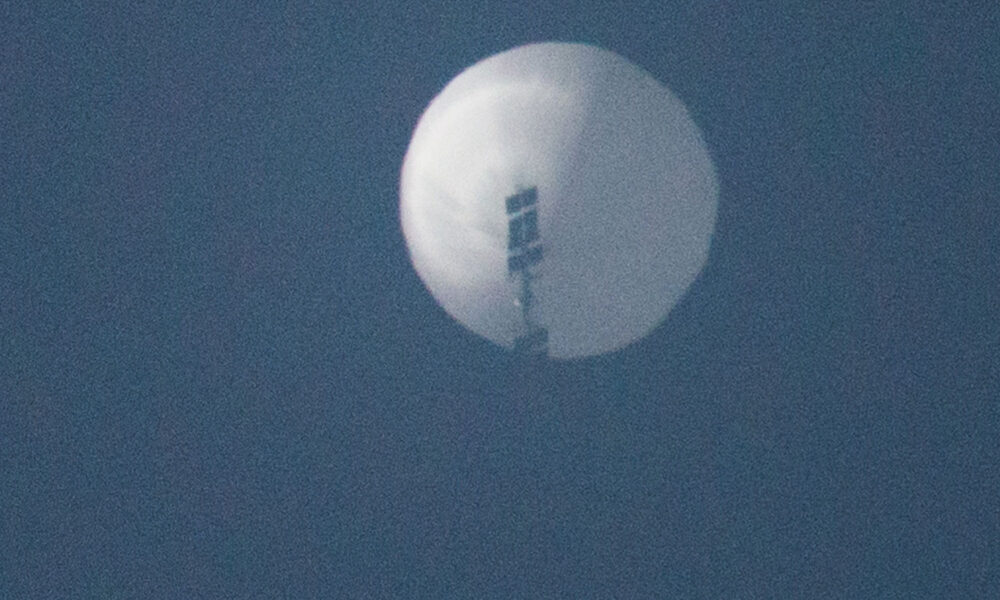I have to admit that at first I didn’t see the Chinese spy balloon drifting into US airspace as the crisis that it would, well, balloon into. Countries spend large amounts of resources spying on each other, expanding their methods as new technologies become available, this is well-known. High-altitude intelligence gathering is routine. As a frequent user of the UCS Satellite Database, I know that China fields more satellites than any other nation besides the United States and that China fields around 280 earth-observing satellites in near earth orbits, which gather electronic intelligence and carry sophisticated optical, radar, and hyperspectral sensor systems, just as the United States does.
Given these assets, I was puzzled by the incursion into US airspace of a Chinese high-altitude balloon, particularly with very unfortunate timing, the eve of an important visit by a high-level US delegation to China, given the increasingly tense and disjointed relationship between the United States and China. In the end, the United States shot down the balloon over shallow coastal waters where the resulting debris wouldn’t harm anyone on the ground and the wreckage could be collected and studied. But not before the balloon’s presence was made public and Secretary of State Antony Blinken cancelled his trip to China, citing a “clear violation of US sovereignty and international law.” China snapped back that the US destruction of the aircraft was “overreacting and seriously violating international practice” and reserved the right to respond further.
From a technical point of view, I have learned a lot in the last week. Investigative reporting has illuminated a long-term ambitious Chinese program of building an increasingly sophisticated balloon-borne intelligence-gathering capability. Balloons have some exploitable advantages over satellites, including the ability to hover over an intelligence target (low-earth satellites orbit the entire earth in about 90 minutes, so they cross the sky quickly). Satellites have predictable orbits, so it is knowable when they’ll be overhead. Balloons are also closer to ground-based targets than satellites are (low-earth orbiting satellites will be hundreds of kilometers from a target, this balloon was around 20 km altitude), which can be an advantage when collecting faint signals, and signals that absorption or scattering from the atmosphere will diminish.
However, one certain advantage of using satellites is that overflight by satellite is a long-established, legal way to collect intelligence. The launch of the first artificial satellite, Sputnik, in 1957 kicked off a legal and strategic discussion over whether space could be used for military purposes, but within a decade it became commonly understood for satellite “overflights” to be appropriate and legal, and such activities were included in arms control agreements as an important verification tool.
In fact, it was an incident not unlike the current one that gave important momentum to the US spy satellite program. In May 1960, US pilot Gary Powers was captured by the Soviets after his high altitude U-2 aircraft was shot down while gathering intelligence over the USSR. At the time the United States claimed that Powers had blacked out during a routine weather flight and inadvertently drifted over Soviet territory. When presented with the physical evidence that it was indeed a spy plane, Powers was tried and convicted and eventually traded back to the United States (as dramatized in the film Bridge of Spies). The incident drove a wedge between Soviet leader Khrushchev and US President Eisenhower and dashed hopes for progress on arms control. The US CORONA satellite mission later that year yielded more imagery of Soviet territory than four years of U-2 flights.
What legal regime covers these high altitudes? In one sense, it is quite clear. Air law covers air operations and space law covers space operations. This is important not least because in space, the Outer Space Treaty permits freedom to navigate over the territory of others, and also imposes responsibilities with those rights. In fact, freedom of overflight is a necessity of space operations because satellites are governed by orbital mechanics and so will by necessity operate over the territories of many states. At what precise place air law gives way to space law was not precisely defined in the Treaty, and remains the subject of some rather interesting debate, which includes technical, cultural, and historical aspects. But in most analyses, air law ends and space law begins somewhere in the range of 70-100 km altitude, much higher than either the Chinese balloon flew, reported at 60,000 feet or about 18 km, or the U-2 plane operated, around 70-80,000 feet, or about 21-24 km. Given the operational differences of high altitude aircraft such as suborbital space tourism flights and stratospheric balloons from traditional aircraft and from satellites, there have been some proposals for a separate legal regime in the altitudes above where traditional airplanes operate but below where “space” begins, potentially redefining what airspace means.
But the question for the moment is not so much technical or legal, but diplomatic and strategic. Will this incident derail any positive moves toward better communication between the United States and China? The way China reportedly handled the situation was not inspiring. Timely, robust, authoritative bilateral communications channels are critical for managing crises before they escalate and spread. Will this week’s events ensure that this happens?

